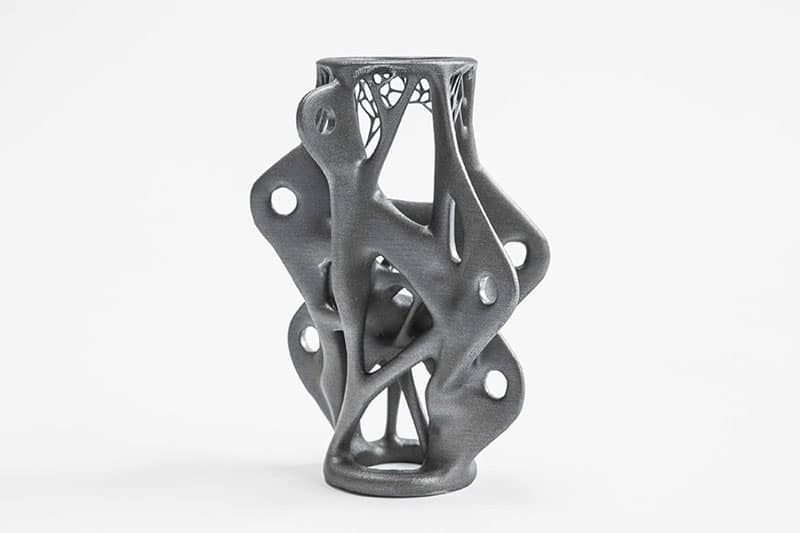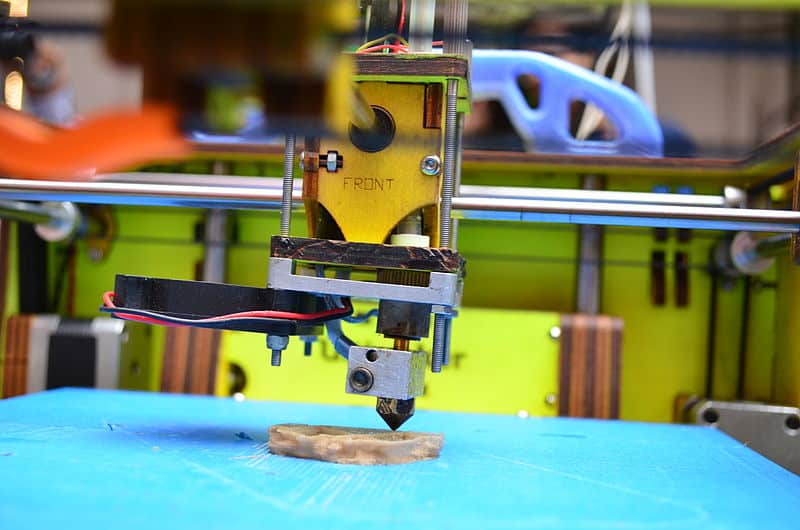Just 10 years ago the 3D printer was still something to dream about. It was a Star Trek replicator or a wacky prediction by Arthur C. Clarke. Turns out, though, that Clarke was right (as he was about a lot of things) and now there’s a 3D printer for sale at Staples. So start saving up for your very own copyright-infringing miracle — and in the meantime, watch for 3D printed products to enter the mainstream in some very interesting places:
1. In the movies

You might not have known this, but if you’ve seen the 2013 move “The Wolverine,” you’ve already seen 3D printing in action. The armor worn by the Silver Samurai was created with a 3D printer. In fact, movies have been incorporating 3D printing technology in a number of fascinating ways.
Obvious uses include the production of specialty suits like the one worn by the Silver Samurai, movie props and collectibles and even animated characters. But there are a few less obvious uses, too — production companies are now using 3D printers to make the perfect stunt double. In this process, both the actor and the stunt double’s faces are digitally scanned. Then a mask is created in the actor’s likeness with interior contours that fit the stunt double’s face.
2. On a rocket
The private company SpaceX has already started using 3D laser printing technology to build components for their rockets. They’ve been using 3D printing in conjunction with cutting edge virtual reality software. (The whole process looks like it came straight out of Hollywood science fiction.) And now that SpaceX is providing some real competition for more traditional Pentagon suppliers, the big guys are looking to follow suit.
Case in point: Lockheed Martin just announced plans to use in-house 3D printing to cut production costs for their flight components. The huge defense contractor is already printing titanium satellite parts. In the long term, they plan to use 3D printing to build an entire working satellite in one long printing run. Even NASA has been testing printed rocket injectors — which, by the way, have completely outperformed their traditionally produced counterparts.
3. On the dinner table
Somebody had to do it; it was almost inevitable. But the Foodini doesn’t exactly cook your food. It kind of squishes it out in layers just like any other 3D printer. And so far the food that it produces isn’t exactly haute cuisine, either. But you can use it to make a decent dessert, some fancy chocolates or a filled pasta like ravioli.
The Foodini uses a system of six separate capsules to hold the various ingredients in your recipe. The contents of each capsule can be extruded at a different temperature and a separate rate of pressure. There’s a built-in heater to keep your food warm while the layers are being built up. It’s kind of a complicated process, though, and at this juncture it appears to be more of a work in process than your next new kitchen appliance.
4. In new construction

A design/engineering firm called Arup is working on making steel construction components — girders, support beams and the like — with 3D printers. The printing process allows them to create these components with less waste and true structural integrity while fitting them solidly into joints. They’re currently producing prototypes that look like sculptural art, but hope to be turning out full-scale components within the year.
The company is using maraging steel, a low-carbon high-tensile steel alloy that’s lighter weight and stronger than traditional construction steel. They expect that, by printing structural components rather than mass-producing them, they’ll allow for more complex architectural design while cutting back on production costs.
5. On your head

The medical community is especially excited about the potential of 3D printing. Researchers have already created prosthetic hands with 3D printers, and they’re working on building working human replacement organs. But one of the coolest prosthetics that’s already been created is a living, working human ear. It takes just 15 minutes to print a prosthetic ear, but the process needs about a week for the cells — made from a foundation of animal collagen — to develop enough for the ear to be implanted on a human head.
But wait! There’s more. Diemut Strebe, an intrepid German artist, has taken this thing to a whole new level. She’s used the DNA of Vincent Van Gogh’s great-great-grand-nephew to create a 3D printed replica of the venerable artist’s left ear. That’s right, it’s the one Van Gogh famously sliced off his own head during one of his crippling psychotic episodes. The ear is currently being exhibited at an art museum in Karlsruhe, Germany. Visitors to the museum are encouraged to whisper into a microphone attached to the disembodied ear.











Leave a Reply